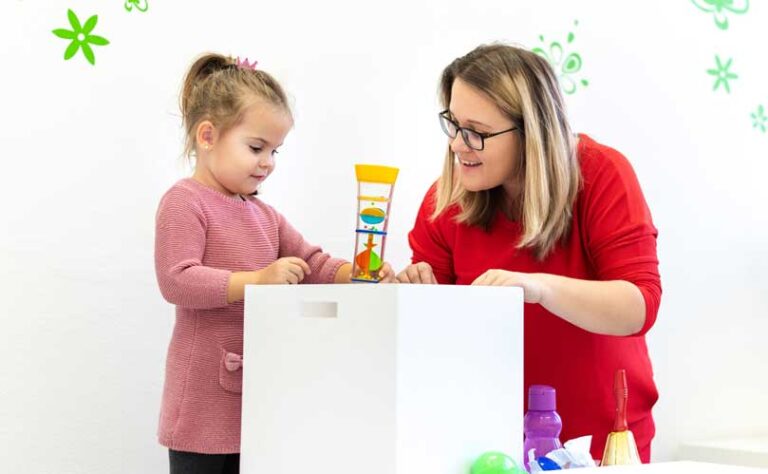About one in every 36 children may have autism. In fact, the prevalence of autism spectrum disorder (ASD) has increased over the years. If you recently discovered your child has autism, it’s important to start exploring options for early intervention. You might want to consider applied behavior analysis therapy or ABA therapy. ABA therapy could help improve your child’s learning, communication, and social skills.
What exactly is applied behavior analysis? How can it help a child on the autism spectrum (including children with Asperger’s)? After reading this guide, you can make an informed decision regarding your child’s course of treatment.
What Is ABA Therapy?
In ABA therapy, a person’s behavior is studied, and a qualified professional works directly with that person on using their skills to accomplish goals and teach them new ones. ABA therapy is one of the most accepted and scientifically proven therapies for children with autism.
When developing an autism treatment plan for your child, you might need to consider multiple therapeutic interventions. Each intervention can vary based on your child’s age. The issues they’re struggling with can determine the best course of action.
For example, if your child has issues communicating, ABA encompasses intensive services, addressing verbal and communication deficits without separating them from other challenges.
ABA therapy programs are designed by Board-Certified Behavior Analysts (BCBAs) and conducted by Registered Behavior Technicians (RBTs). Both are governed and licensed by the Behavior Analyst Certification Board (BACB).
What Does a Board-Certified Behavior Analyst (BCBA) Do?
A BCBA conducts assessments and uses the results to create a custom therapy plan. They also assess results from sessions and modify treatment plans to meet client goals.
BCBAs have a master’s degree in Applied Behavior Analysis. They also complete a comprehensive internship under qualified supervision. The certification exam is no cakewalk and has only a 50% pass rate.
What Does a Registered Behavior Technician (RBT) Do?
An RBT spends many hours with the client on therapy and is supervised by a BCBA. These ABA therapists implement the treatment plans and behavior plans developed by the BCBA.
What Is the Goal of ABA Therapy?
With Applied Behavior Analysis techniques, your child will learn to accomplish goals, including:
- Improved language and communication skills
- Decreased behavioral challenges such as aggression, self-injury, tantrums, and/or property destruction
- Increased adaptive skills, independence, attention, and social skills
Behavior analysts can help parents and the registered behavior technician better understand your child. With ABA, you can gain a better understanding of your child’s behaviors. You can also determine how their different environments affect their behaviors.
Over the course of their autism therapy, your child can:
- Thrive in school, home, clinic and community settings
- Learn how to ask for what they want functionally
- Communicate more effectively with others
- Learn to connect with people
- Stop self-harming, aggressive and other maladaptive behaviors
How Does ABA Therapy Work?
This form of autism therapy is different for every client because it involves analyzing individual behavior. And as autism expert Dr. Stephen Shore has said, “If you’ve met one individual with autism, you’ve met one individual with autism.” ABA therapy involves multiple steps that are each tailored to your child’s needs.
Consulting and Assessment
To begin, you’ll sit down with a Board Certified Behavior Analyst (BCBA) for a consultation appointment. The consultation process is called the functional behavior assessment (FBA).
During this appointment, you’ll get a chance to discuss your child’s strengths and weaknesses.
Creating a Formal Plan
Once the BCBA completes the assessment, they can build a customized plan for your child. The plan will consider your child’s unique needs and goals that have been defined by the family. Analyzing data collected by observing your child, the BCBA can determine which approaches may be most beneficial in building skill repertoires and addressing maladaptive behaviors.
It’s important to get the people in your child’s life involved. Getting everyone on the same page will ensure your child’s success moving forward.
ABA therapists can work with your child in multiple environments, like home, school, the playground, grocery store, etc. That way, they can see how your child responds to their daily schedule.
Positive Reinforcement
One of the main strategies used within ABA therapy is positive reinforcement. Positive reinforcement clearly teaches the individual what adaptive behaviors we want to utilize when challenges arise and teaches the individual when they’ve got the right answer in the case of academic goals. It encourages them to continue the same behaviors in the future.
The BCBA will identify a goal behavior for your child. Each time your child completes that action, they’ll receive a reward based on their preferences, such as:
- Toys
- Books
- Praise
- Access to favorite activities
- Video games
Your team may discuss the “A-B-Cs” during the course of your child’s treatment:
- A—Antecedent, or what occurs right before the target behavior
- B—Behavior, or the behavior we want to address
- C—Consequence, what happens afterward
Common antecedents can include:
- Verbal cues, such as requests or commands
- Physical cues, such as objects or sounds
- Environmental cues, such as another person interacting
Exploring your child’s ABCs can help an analyst determine why a specific behavior occurs. Then, they can determine how different consequences affect the behavior. With practice, your child can replace unwanted behaviors with alternative, more positive ones.
Caregiver Training
In order to generalize skills, it’s a good idea to get involved in your child’s treatment. Good ABA therapy will include parent or caregiver training. Family involvement is an important factor in successful ABA Therapy.
As parents, entering your child into ABA Therapy can be challenging. You may not know how to duplicate the skills they’re learning in ABA therapy at home. You can absorb the basics of applied behavior analysis therapy as you work with your ABA specialist and your child. You will learn how to encourage new skills as well as how to handle challenging behavior.
It helps to determine which forms of reinforcement can have a negative effect on your child’s progress, too. For example, you won’t want to give in to tantrums. The BCBA will help you find new ways to help your child through these behaviors.
Evaluations
Over the course of your child’s ABA therapy, the BCBA will determine which interventions are working based on ongoing data from observations. Then, they can make changes to your child’s treatment plan. Adjusting their approach will help them recognize which techniques are best suited for your child.
Other Uses for ABA Therapy
While the primary use for ABA therapy has always been to help people with autism, it can also help treat patients with other developmental concerns, including:
- Cognitive impairment (often due to a brain injury)
- Anger or mood issues
- OCD
- Phobias
- Panic disorder
- Dementia
- Eating disorders
- Borderline personality disorder
- Substance misuse
How Much Does ABA Therapy Cost?
Because of the custom nature of ABA therapy, it is difficult to hang a price tag on it. Fortunately, most states have laws requiring insurance companies to provide coverage for autism treatment. And there are a number of government assistance programs and private grants available.
However, the cost is determined based on different variables, including:
- Type of ABA intervention used
- Services offered
- Client needs and goals
- Frequency of treatment sessions
Finding a Therapist
Before starting your child’s ABA therapy, it’s important to find a qualified behavior analyst. Choosing a board certified behavior analyst will give you peace of mind. You’ll know your child is in the best possible hands.
First, make sure the therapist has extensive, specialized ABA training. In some cases, a therapist won’t have BACB (Behavior Analyst Certification Board) certification. They might still have training, though. Ask how recently they completed their training.
Are they using the most up-to-date techniques? If they don’t prioritize continued learning, they might be depending on outdated knowledge. Look for someone who has experience and continued training on ABA interventions.
Here is a list of questions you can ask while interviewing ABA therapists:
- What training have you received?
- How recently did you receive training?
- How will you meet my child’s specific needs?
- What techniques can I use at home to help my child?
- Do you offer any scholarships or funding opportunities?
- How many hours of therapy will my child require each week?
- Can I sit in on my child’s therapy sessions?
- How do you address negative behaviors?
- What techniques can I use after my child’s sessions?
- How many people will help my child?
What is ABA Therapy? Find out at ABA Centers of America
With early intervention, you can equip your child with the skills they need in real-life situations. At ABA Centers of America, we specialize in helping families create the brightest future possible. We are here to help children, teens, and adults grow, learn, and lead fulfilling lives. We have experience with all forms of autism across the spectrum and with people of all ages. Was your child recently diagnosed with an autism spectrum disorder? We can help.
Contact us today for a free consultation with one of our autism treatment professionals.







